The unique, goofy appearance of axolotls has made them a big hit with exotic pet lovers today. Because of their striking appearance, they actually sell for a decent amount of money. They are also seeing a massive decline in their population in the wild, as they are listed as “critically endangered.”
That is why breeding them under captive care can be crucial to ensuring this amphibian’s existence, as well as a very good business model to breed and sell them.
Would you like to take advantage of the chance to enter the axolotl market as a potential breeder? Stay with me as I share all the details on these amphibians’ reproductive systems in this article.
How does an Axolotl have babies? Do Axolotls lay Eggs or give birth?
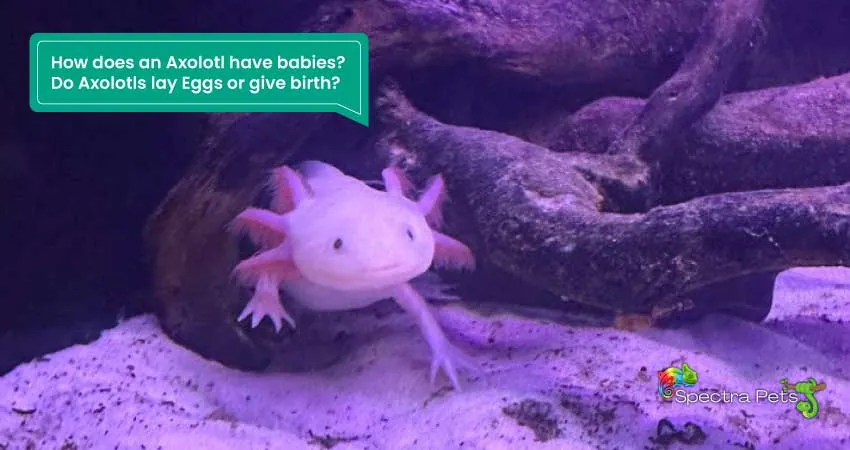
Axolotls are amphibians that lay eggs, which hatch and undergo metamorphosis. Unlike mammals, they don’t give birth to their offspring.
When these amphibians have reached sexual maturity, they begin to mate in a really unique way. This shouldn’t come as a surprise, as this particular creature is full of unique feats!
So how do you actually know when your axolotl is mating? It is quite simple to follow.
The process is initiated by the male axolotl. He nudges the female’s backside with his nose to show that he is interested in her. After that, if the female is still interested, the male axolotl will lead her around the aquarium while standing in front of her.
During this, the male drops multiple packages of sperm, known as a spermatophore. The main goal of the male here is to lead the female to this package to the point where her cloaca is positioned right above it.
The female, at that point, will take the package up inside the cloaca. The male will continue to lead the female as she picks up multiple spermatophores. This lasts about 55–60 minutes.
Around 1–3 days after mating, the females will begin to lay eggs.
Additional Read:
How many eggs do Axolotls lay at a time? How often do Axolotls lay eggs?
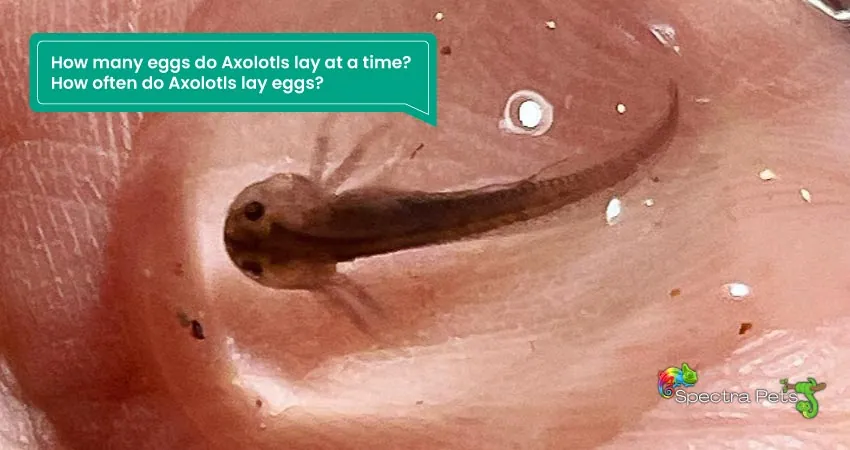
The average number of eggs an axolotl can lay in a single sitting is around 300. In fact, one female axolotl can lay up to 1500 eggs at a time. Fascinating, isn’t it?
If you keep the female Axolotl with a male, the female will lay eggs continuously. Since laying eggs consumes a lot of energy from the female’s body, you should try not to leave the male and female together in the same tank for too long.
Axolotls will continuously keep breeding and laying eggs if you keep a pair consisting of a male and a female together, given the right conditions. However, this procedure is very harsh on the female axolotl.
Laying eggs takes quite a toll on the female’s body. It consumes a good amount of energy every time, and induces stress. During the egg-laying process, the body gives priority to reproduction and gives other important body functions less priority. That’s why you must separate the female axolotl from the male for a while after she has laid her eggs, so that she has some rest and time to recover.
How Many Babies Do Axolotls Have At A Time?
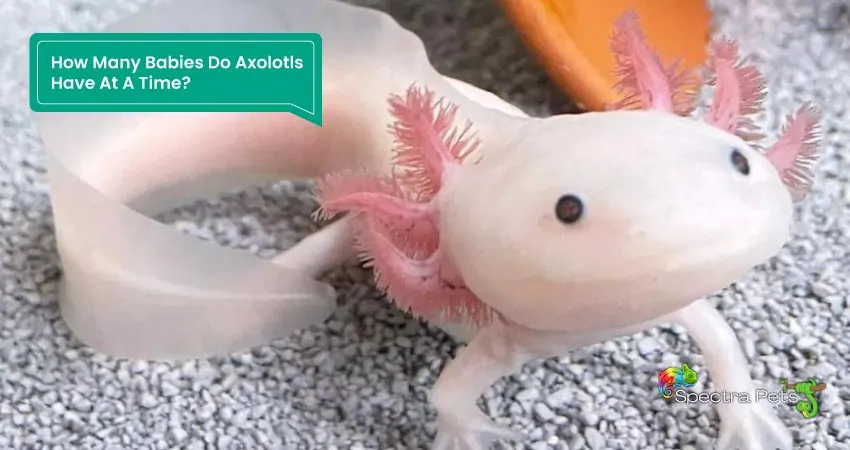
Once the eggs have been laid, it usually takes around 15 days for the eggs to hatch into baby axolotl tadpoles. The number is really dependent on how many eggs you have available. Usually, 80% of the eggs laid will successfully hatch.
To prevent the aquarium from becoming too crowded, professional breeders advise dividing the eggs into groups of 100, and after the babies mature a bit, the grouping needs to be even smaller.
Read Next: Do Axolotls Eat Their Eggs or Babies?
When can Axolotls reproduce? What season do Axolotls lay eggs?
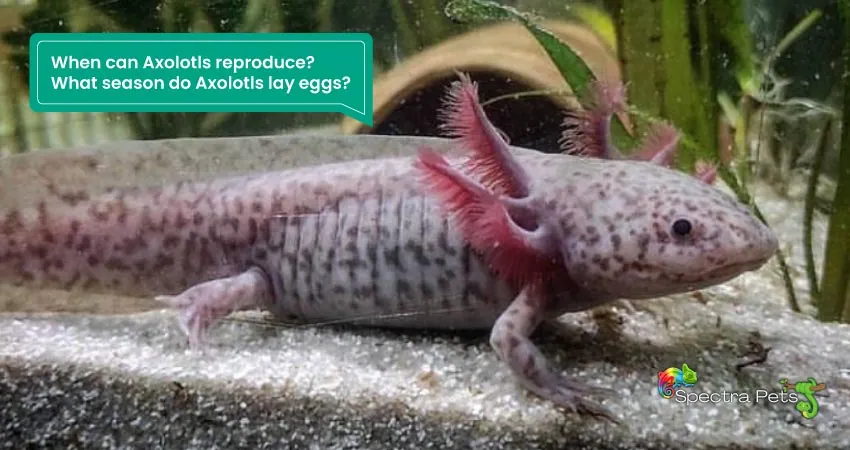
After they’ve reached sexual maturity, axolotls can begin to mate. They typically breed in the mid to late winter and early spring because of variations in day length and temperature throughout the year.
Keep in mind that this is only applicable to the wild population. Inducing breeding at different times of the year is frequently accomplished by performing a partial water change with water that is noticeably colder than the aquarium’s current water.
What does an Axolotl Egg look like?
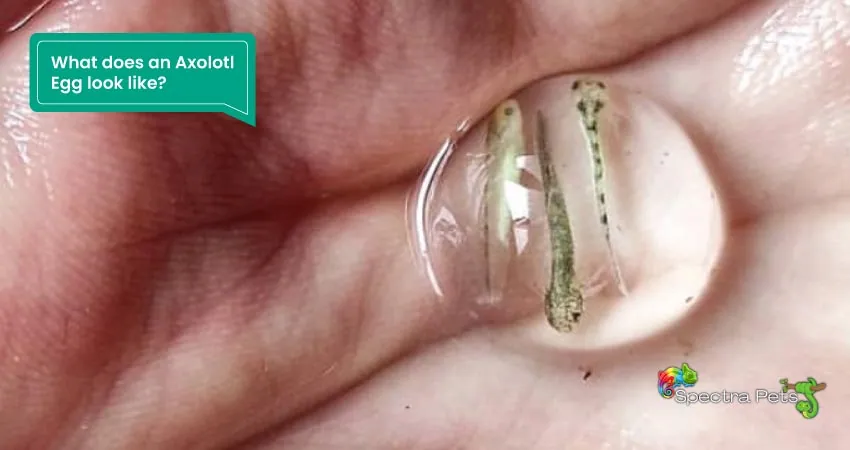
Freshly laid axolotl eggs have a pale white color and a round shape. They have an outer shell that prevents them from getting rotten.
After about 4 days from the time the eggs are laid, it is simple to determine whether an egg has been fertilized or not. They start to take on a lengthy appearance, and their tail starts becoming visually noticeable. You can also see the developing head and gills.
How Old Do Axolotls Have To Be To Breed?

Axolotls typically start to mature when their total length reaches around 7 inches. Typically, there is a one- to two-month difference in the maturation times of males and females.
These amphibians usually reach their sexual maturity at any time between five months and a few years from their birth. It usually depends on a few things, such as:
- Food quality
- Living condition
- Water temperature
Can Axolotls Have Babies Without A Male?
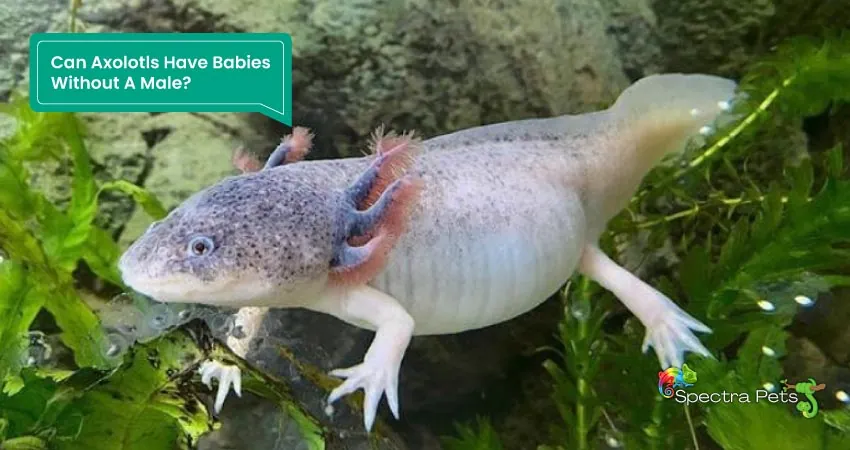
Axolotls reproduce sexually, which means a male and a female go through some sort of sexual interaction in order to reproduce. This procedure inherits the genes of both parents and gives the offspring their unique gene.
Although it has been reported that a female axolotl has managed to lay eggs without a male, this is the exception rather than the rule. In such cases, there will never be more than a small number, and they will also be unfertilized.
do Axolotls reproduce asexually?
They don’t. Asexual reproduction is a method where only one parent is required to produce offspring. The reproduction of axolotls requires sexuality, which requires both a male and a female in order to have a successful breeding session.
Wrapping Up
Whether you’re entering this as a potential breeder looking to make a living from breeding axolotls, or someone looking to preserve these critically endangered amphibians in the wild, it is crucial to understand the axolotl breeding process thoroughly. Regardless of your perspective, feel free to leave a comment in the comment section if you learned anything or if you have a question!
